Spotlight on Daan Verhoeven
Sep 27, 2015

TID: Hi Daan, thank you for taking the time to go over your work; I've been a fan for a long time. This is a stunning image. Can you talk about how this image came about?
Daan: This is William Trubridge in Dean's Blue Hole, Bahamas. I call it 'Who needs fins’ - William is a world record holding freediver who specializes in the category 'constant weight no fins', where you swim down a line as deep as you can and back up using just your hands and feet. He swam to 101 meters. This image was taken after one of his training dives. I wanted to show him in his environment as natural as I could get, so I asked him to go without a suit. It was the second time that week we tried to get the shot -the first time I messed up. This time I didn't get what I had in mind either -but I liked what we got much better.
TID: You say this is a different image than normal for you - what did you mean by that?
Daan: To give context: This photo is a bit of an exception in my catalogue, for many reasons. Not so much the subject matter -I’m a freediving photographer so I have mostly pictures of people underwater. Not so much the location, either: i've been lucky enough to visit Dean's Blue Hole half a dozen times over the last 5 years. The major differences with my usual work, though, are that this was a planned shot, there is a distinct absence of neoprene, and it's in B&W.
When I say planned, I mean more 'conceptualised'. In many ways underwater photography is the opposite to studio photography; you can't really plan things, everything moves, including you, the light changes by the second, the visibility changes by the minute and it's very, very wet. So when I have a concept in mind, it's a very fluid one.
TID: How did this situation come about?
Daan: I wanted to do a variation of a photo i'd done that proved popular, called 'Brian flies into the blue.’ One of the reasons that picture worked, I thought, was because it was so recognizably human, framed in such an alien environment, and it looked like he was flying through it. I wanted to do something similar with William, using the blue hole as a frame, but this time a bit deeper, to make the hole smaller and give it a more spooky atmosphere.
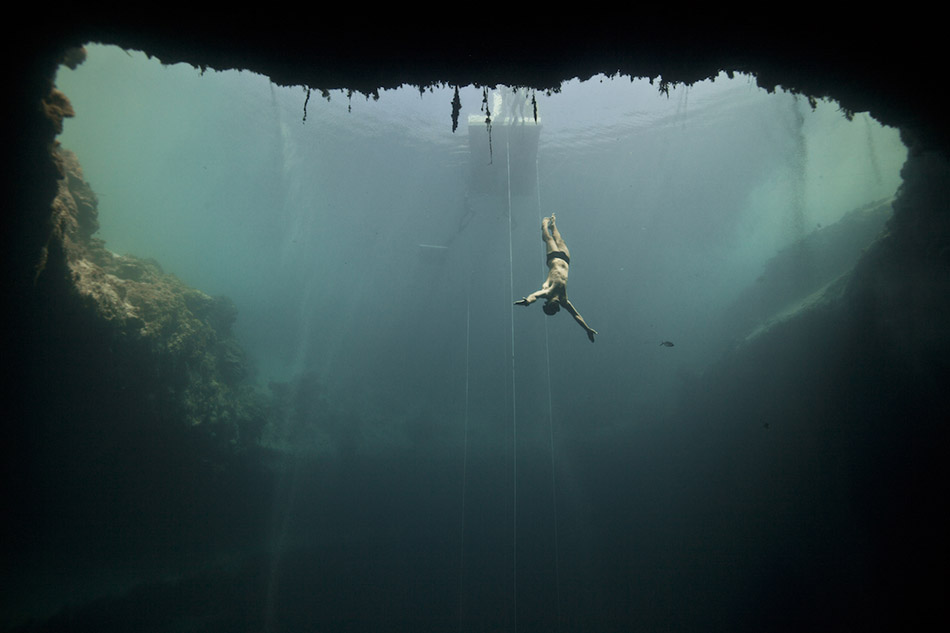
"Brian flies into the blue"
Daan: We'd tried to get the shot earlier that week, but it ended up a mess; I was not quite in the right place, not quite deep enough, and I couldn't get it to work in edits either. The blue hole is tricky to edit in, with its deep shadows, bright top, lights bleeding round corners and vast darkness underneath, especially when you're slightly shooting up as I was. I had nothing really usable. Not that big a worry, I wasn't there on assignment or on some deadline, but the thing with these shoots without thermal protection is that they're quite tough on the subjects, even if the water is 25 degrees C (77F). William was in training mode and doing this as a favour to me -on other days after training he'd head straight for the beach for a recovery drink and then home for lunch. Doing another dive without a suit on is not ideal, and quite cold.
Normally I cover mostly competitions, where freedivers are wearing their suits and doing their dives and I work around that. They announce their depths the day before, and based on their announcements the line gets set to that depth and they get a Time of Performance (top). So say their top is 12:07, they get a countdown from 12:05 and at 12:07 they have a window of 30 seconds to start their dive. This gives me the opportunity to go down, usually about 30 seconds before them, get to around 20 meters or where ever I reckon the view up is best, and wait there for them to start. When they dive, I can then adjust my position to get to be in front of them when they swim by me at depth. Then I swim up, take a few breaths and dive again to catch them on their way back up. So I dive twice for each competitor, and most working days, depending on the number of athletes, I do 50 to 60 dives.
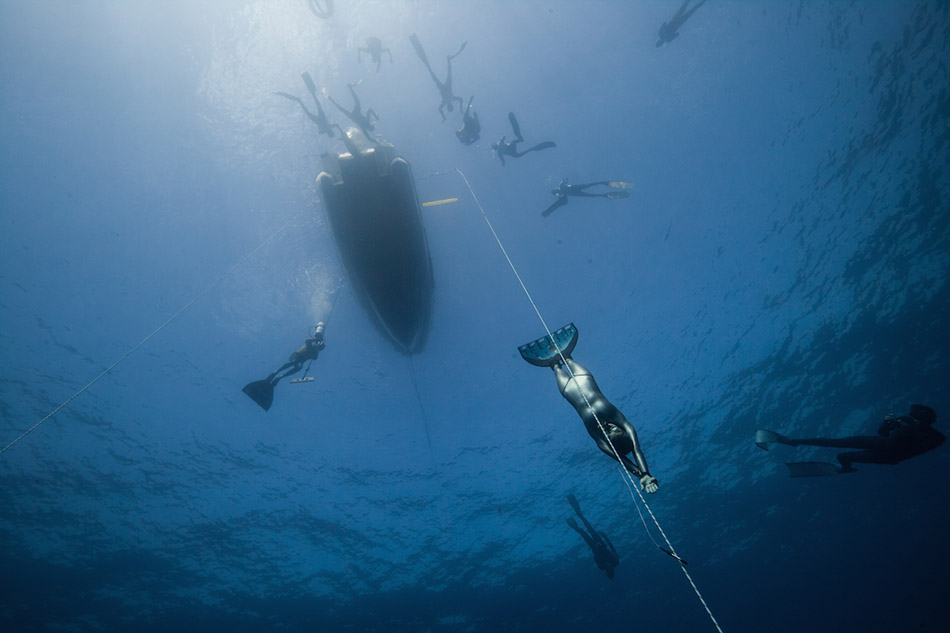
Daan: Ideally you pick your background and ask your model to position themselves so it suits, but I can't do that when I'm documenting a competition. Ideally the athlete would face the light, but 99 out of 100 cases they don't. I don't know what it is, but most freedivers have a special talent for turning their backs to the light. So you work with what you get, you improvise, you stay fluid like the element you're in. Everything is moving so you move with it, and you know the direction your subject is moving in, so at least you can anticipate a little. I find this helps me 'get in the zone', this unpredictability. When I plan a shoot or have a preconceived notion about what i'd like to get, there's too much on my mind and I find my shots to be a bit forced at times. But when I cover a competition, there's a flow to it that I find myself melting into, there's a rhythm to it I can adjust my breathing to, and I find myself not thinking at all about shots, purely working on instinct and becoming an extension of the frame. You see the action unfolding and you know where you need to be to capture it. Water gives you and extra dimension to move in, and that freedom really allows you to follow your instincts. Most of the time hours go by without me noticing -I'm just swimming after the frame.
Of course there is a technical aspect to this. In order to give myself the freedom to move around the athlete, shoot down into the dark or up into the light without having to change my settings, I tend to use shutter-speed priority with fixed ISO. Depending on light conditions I turn the ISO down much as I can, as the 5D mark ii i'm using gets a bit noisy over 1000 iso. I find that for monofins you need at least 1/200th of a second shutter speed, and for no fins 1/250th. My 16-35 mm lens can go all the way down to f/2.8 and often it does when i'm pointing it into the abyss. These pictures get incredibly vignetty and are barely useable, but most of the time the aperture stays above 3.5 and I get the shot -or at least a shot. (I know, it's time for a new camera, one that's noise-free till 12800 or something ridiculous like that, and I agree, but my bank account does not, for have you seen what underwater housings cost etc etc, the struggles of the artist blah blah).
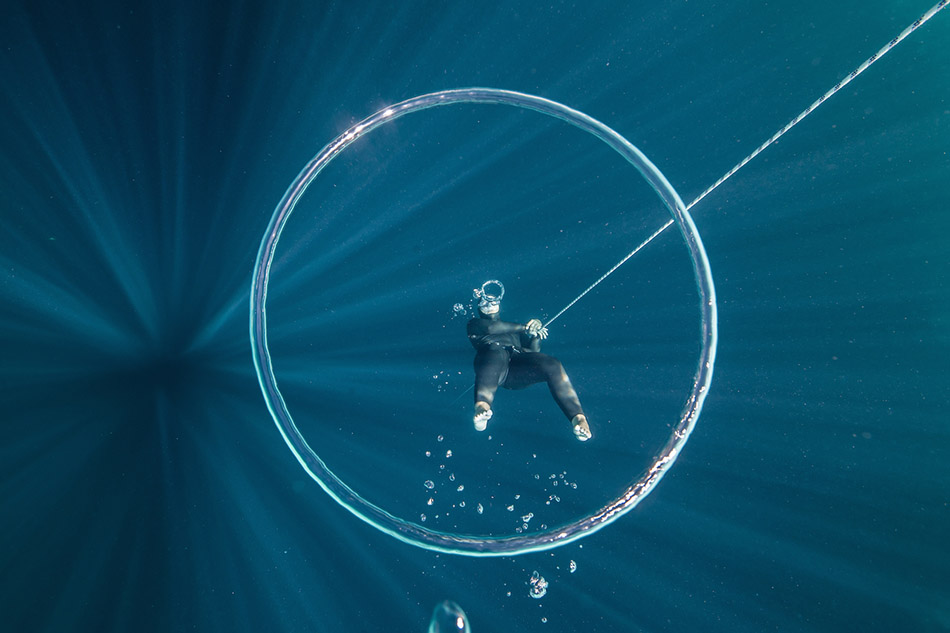
TID: Can you tell us about your background with freediving?
Daan: I started freediving in 2005 during a scuba trip. They'd organised a day of snorkeling and a friend and i had fun trying to get an analogue depth gage as deep as possible. We started with 7 meter dives and ended up touching the top of a wreck at 15 meters. It was more fun than any of the scuba dives we did, so much so that it stayed on our minds. My friend then found a showing of an Imax documentary called 'Ocean Men', and in that, a freediver swam down to a wreck, and went in it! I was gazing at that huge screen and saw that man doing something I could almost relate to, halfway imagine I could do that, and it was called 'freediving'. I knew this was something i wanted to learn. So we took a course and I quickly became obsessed. At the time I was still smoking and very unhealthy, both physically and mentally, but the freediving helped me get my shit together. I stopped smoking and started eating healthy, trained 6 days a week and quickly improved. My mental state also improved -I went from being very withdrawn to much more sociable, especially when I started competing.
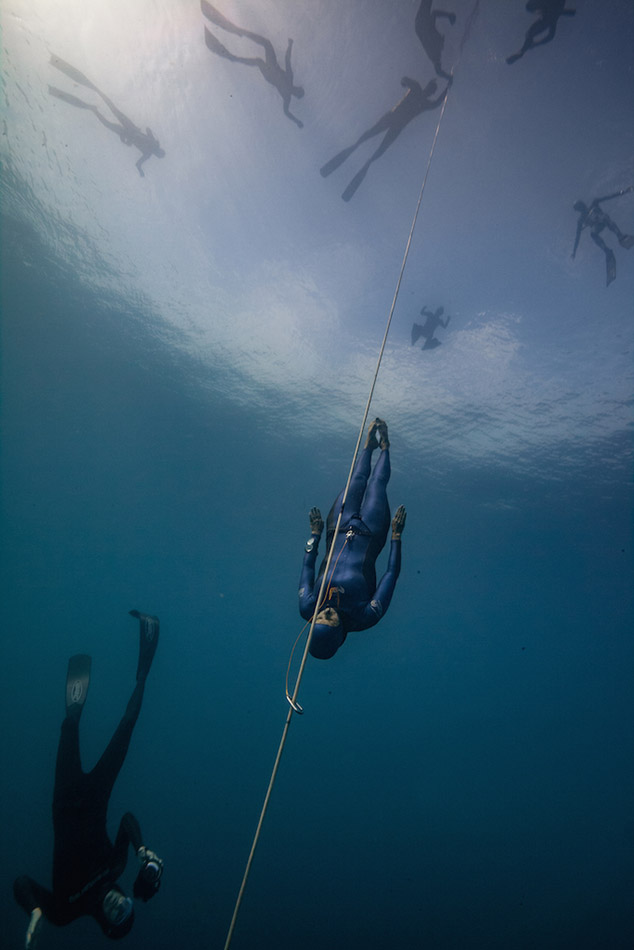
Daan: That was the other big thing I loved about freediving. I always knew I preferred things underwater -as a kid I was more below the surface than on it when in a pool- but at freediving events I found all these people who had the same thing. At an event in Germany I was walking down a hill towards a lake to go diving, and a woman was walking up that hill in her suit towards me, and we exchanged a smile: she knew what I was about to experience, I knew what she just went through -we had a bond without ever exchanging a word. In freediving I hadn't only found my passion, I’d found my tribe.
Because I have a slightly obsessive character, or maybe i should call it passionate, I trained like a beast and before I knew it, was quite average as a freediver. But in tiny Holland that meant I was quite good on a national level, and all of a sudden I found myself breaking national records. There are 6 disciplines in freediving and I have set national records in 5 of them at various points.
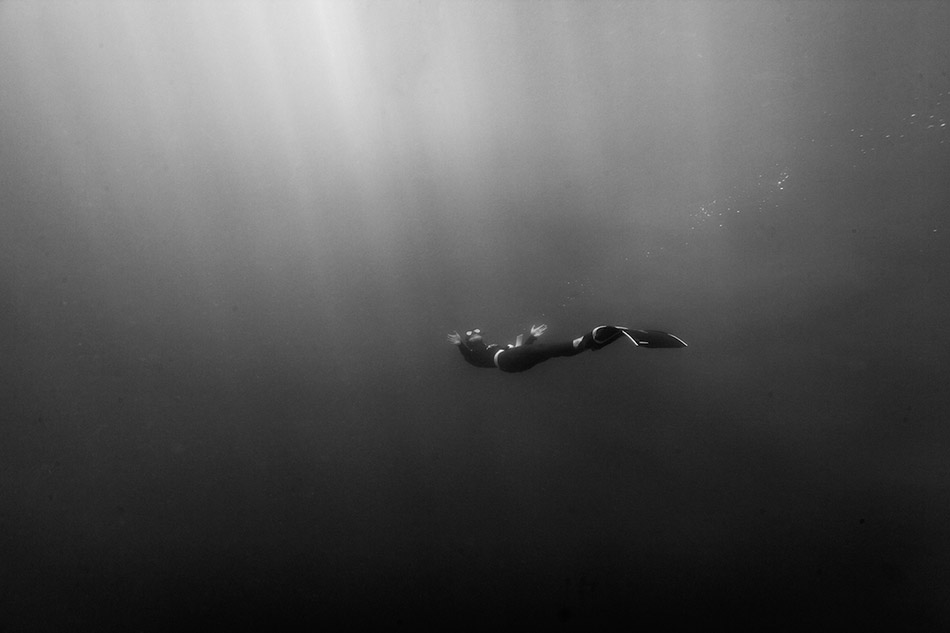
Daan: A funny thing happens once you start setting national records: no matter how small the sport, people take notice. Suddenly I had eyes on me during my dives. Or it felt like I had eyes on me. Like most photographers, I don't much like being watched. And another thing happened as well, which I guess was ego. Part of me liked being the best at something. I come from two smart families and I was always mediocre, at school and at sports. My father was a philosopher and a professor of metaphysics, and when he died it was on the news as ‘Holland's most original thinker has passed away'. Though he'd never have wanted it that way, I grew up feeling like an evolutionary step backwards. Here was this genius thinker, and I was an average son.
But then I set a depth record, I swam to 36 meters without fins and suddenly, i'm the deepest in Holland. My father was the deepest in Holland, too -metaphysically. My father couldn't swim and I drown in half an inch of Heidegger, but we're both deepest in our respective fields. Much as I loved this thought, and the realization that we were both deep because we followed our passions, and passion lead you deeper in life, it also brought with it a problem: I started diving for numbers.
That combination of ego and being watched was killing for my diving. Something I did out of love became something I felt obliged to do, and I started developing mental blocks. After one length of a pool I'd swim into a giant 'NO' in my head. I'd started freediving to get away from my negativity, and now it was causing it. I feared I'd loose the love, the passion, and fall back into depression. So I stopped competing, but I kept training, and because I not just loved freediving but also freedivers, I kept going to competitions, but this time as a safety diver.
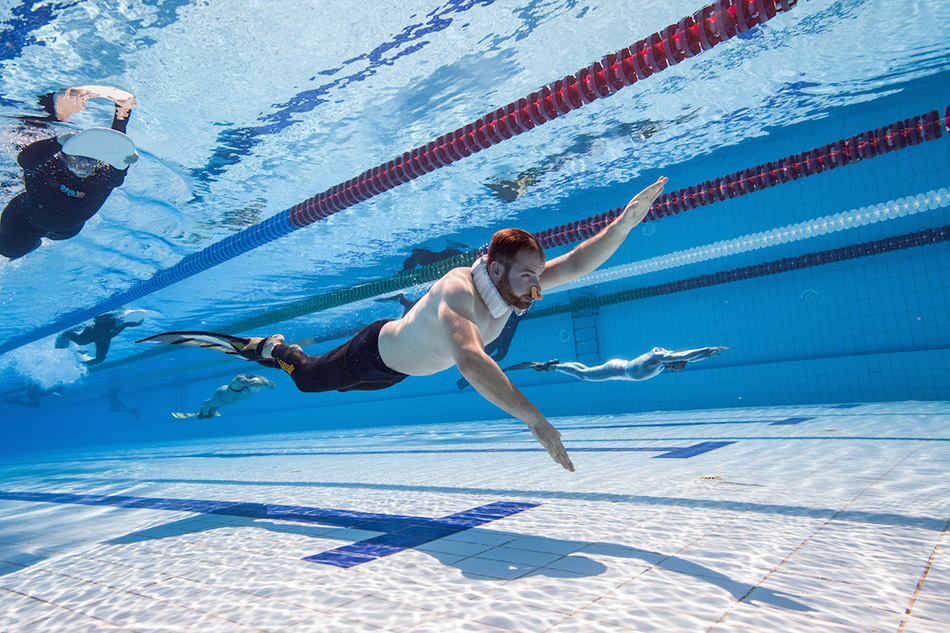
Daan: Freediving really is a team sport. It has a reputation for being dangerous but when you do it as a team, one dives and the other does safety, your worst risk is a black out. When you hold your breath too long the brain decides to throw the switch on its largest consumer of oxygen, your consciousness. Makes sense, for it is that very consciousness making the slightly odd decision not to breath. Loss of consciousness in and of itself is not a dangerous thing -we loose consciousness every night when we fall asleep- but when it happens in water, you risk drowning. A safety diver swims with you on the last part of your dive, and makes sure you get to the surface safely.
Every competition has dedicated safety divers, and over the years I’d trained as a safety diver fairly often, because I couldn't equalise well below 40 meters. That meant my dives weren't very tiring and I had energy left to watch over other people as they dived. From 2009 I skipped competing all together and focussed on safety. I loved seeing all my friends dive and do well, and when they got in trouble it turned out I was quite good at helping them. I was voted safety diver of the year in 2010 and 2011, and when I did my instructor course my area of specialty was safety.
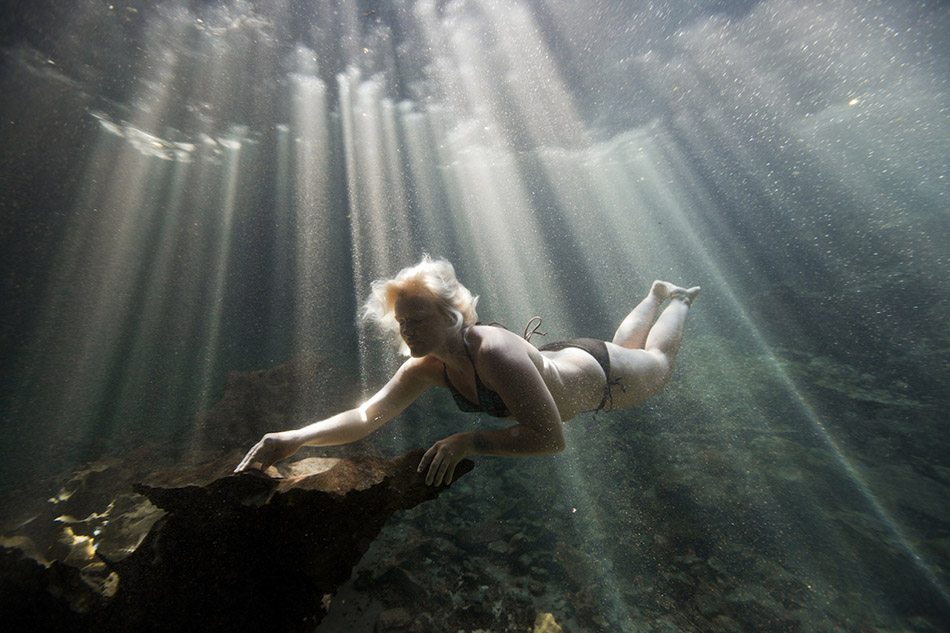
Daan: During this period I’d re-discovered photography. I'd been rejected from photography school in Holland when I tried out, on the basis that my portfolio was shit -which it was. I made the mistake thinking that meant I wasn't going to be a photographer and so I stopped. But when I started freediving I also started traveling, and my mother started worrying about me dying of crashes and drownings instead of dying alone under a bridge, so I got a cellphone. I hated phones and still do, so I resisted the mobile revolution for a long time, but I had to send her messages that I was alright, so I got a little nokia. The upside of that was that it had a tiny 1.2 MB camera, and I started playing with that. That was fun, so then I borrowed an old Minolta compact, which was a bit better fun, and then I borrowed a Panasonic travel zoom, which was actually pretty good. I was in the midst of wanting to buy a decent compact for myself when I was with a photographer friend on a trip, and she let me play with her Nikon D80. Proper camera, and with some of her tutelage I quickly fell in love with what it could do -and with that shutter sound. So when I saw a Nikon d90 on offer at the airport on the way back, I phoned her to ask if I should buy it. She told me to go for it and I’m grateful to her to this day. It was at that point the biggest investment I'd ever made, dearer than any crap car i'd ever bought, and it was petrifying, and the learning curve was steeper than Pisa's tower, but if I hadn't made that decision, I’d never gone pro 2 years later.
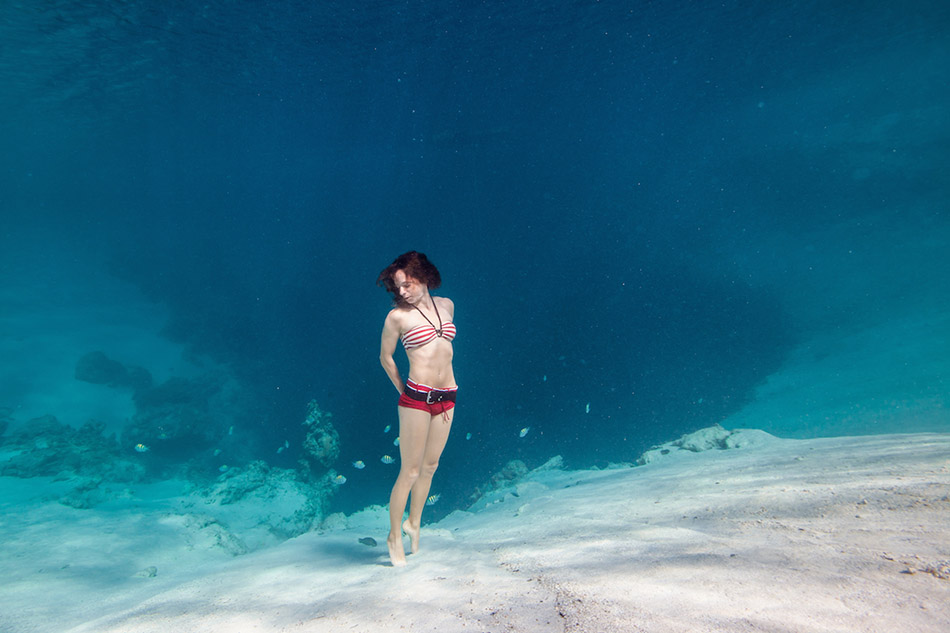
Daan: A similar thing happened with underwater photography: I’d been messing around with a little waterproof panasonic compact when a friend let me try his Canon 20D in Subal housing. It was a pricy combo and I was nervous diving with it, but as I brought the viewfinder to my eye, lined up the shot and pulled the trigger, the camera went 'click' and so did something deep within me. At the end of that day I had that knowledge of no choice, the certainty of no option; I wanted to spend the rest of my life doing that. It took me 9 months of hard labor in gardens to save up enough to buy the set-up most of my underwater photographer friends recommended, a Canon 5D, 16-35 mm lens and Hugyfot housing. I actually had to borrow money for the housing, but I paid that off in 6 months, and after 2 more years of manual labor in gardens I was making enough money as an underwater photographer to do it full time.
One of the skills that came in handy was safety. I am well aware of the dangers I was putting myself in as an underwater photographer, so I make sure to follow the same protocol; somebody is always watching me. Whether i'm photographing friends in the shallows of the pool or sharks in the deep, I make sure someone knows what i'm doing and is keeping an eye on me. At competitions this usually is one of the safety divers, and in case of 'who needs fins' it was my girlfriend, who's a champion freediver and a safety expert. It is very easy to forget what you are doing when handling a camera, and I sometimes find myself forgetting that I’m a hundred feet away from air, but as a safety diver I’ve seen so many freak accidents that in the back of my mind an alarm goes off whenever I find myself pushing it. This is a very annoying alarm for a freediver but very handy for me. So I rely on telling my friends what i'm doing, and on my own senses, and that combination makes me feel safe. I guess being a bit of a wimp helps -going under that overhang for 'who needs fins' really spooks me a bit, and I only do it because I know the view there is spectacular.
TID: So yes, back to the main image…
Daan: I knew I had something there, not quite what I’d imagined but something good. And I loved how we got it too; following the principle of not taking pictures of, but making pictures with people - I’d discussed the idea with William, who understands the technical aspects of photography. He suggested that in order for me to keep ISO and my shutter speed down as well to allow enough light in (we were going below 20 meters, me under a ledge -light was going to be sparse), he could slow down his movements so I wouldn't get a blur. That would allow me 1/100th shutter-speed at iso 320. The file would be good to edit to the max.
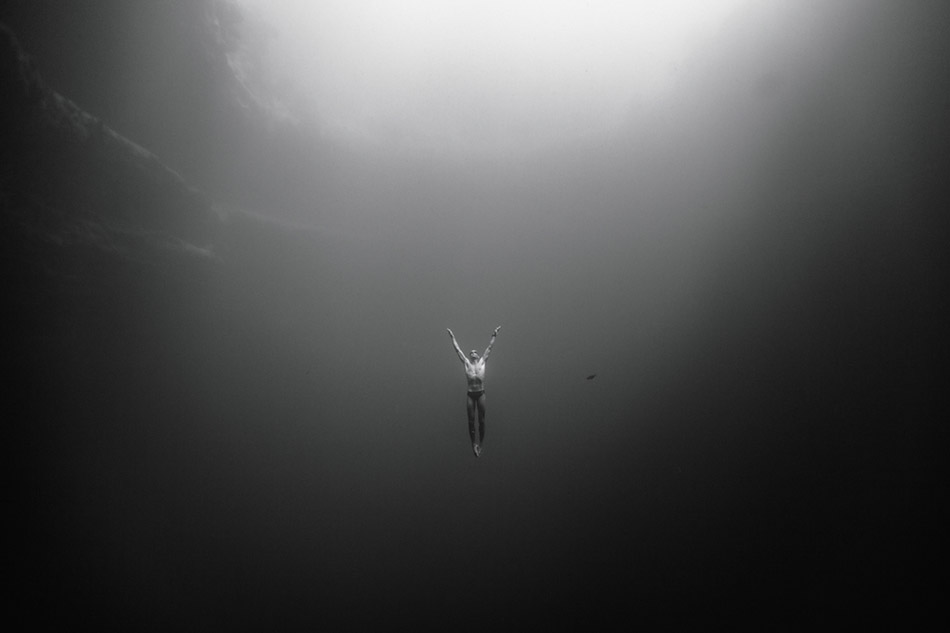
Daan: But it simply wasn't working. I couldn't get the blue right (there's a lot of green there for something called a 'blue hole' -at times it's so green it looks like the Hulk's poop chute), I couldn't get the skin-tones right, it all looked too edited and fake. I got so frustrated with it that I decided to completely desaturate the pic to get a different perspective on it. As soon as I did, the resulting black and white image just popped. I had been blind to the option of it being B&W -maybe also because i'd done something with Will from that spot in B&W before.
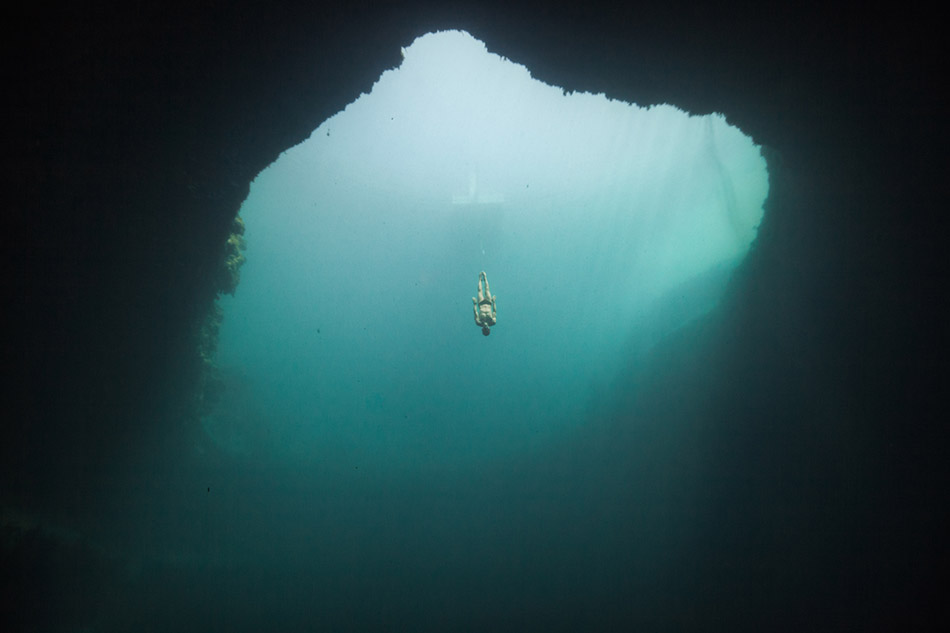
Daan: It is also an exceptional picture in my catalog because I distinctly remember taking it. I wasn't in any kind of flow doing this, I wasn't at all working on instinct. I was slightly nervous going in for it, since I’d already messed up one chance to get it, and it's a dive under an overhang, which spooks me, and I was very much trying to get the frame just right. So I remember it well, I was annoyingly present, right up to the moment where I knew I was trying too hard and gave up on the frame being exact. Soon as I gave up on the idea and let go of the result, I relaxed, reframed and took these shots instead. I remember swimming up, feeling tired from that days training, and thinking "well, it's not what I had in mind, but it might be something anyway."
Ever since I've sort of been sitting on this image. Haven't sold it, haven't shown it much to people. Was waiting for an opportunity to baptise it, so to speak. The image seemed to warrant a bit of decorum, somehow, more than I knew how to give it. When you so kindly invited me to talk about an image, it seemed the right time for it to show itself. Since making this picture I've realised part of my stupidity and started exploring B&W a bit more. The other week I did a shoot in a lake and realised even before going in the water that this was going to be monochrome -the light and the colours were all right for it. I would have never thought about that if I hadn't gone through the process of creating the image with William. 'Who needs fins' showed me I need Black and White

+++++++++++++++++++++++++++++++++++++++++++++++
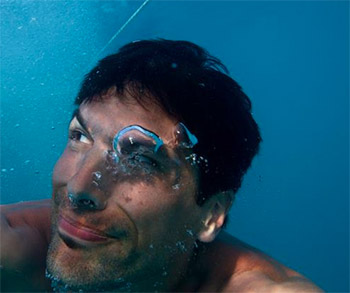
'Style is a voluntary restriction of available means'
Cornelis Verhoeven
These words by his father, a Dutch philosopher and writer, have been a guide for Daan throughout his photography. Topside it usually means he shoots with natural light, finding the angle and frame that suits the subject and leaves out as much else as possible. Underwater, it means the same, with the addition that Daan dives without the use of scuba tanks - he freedives. This allows him to not only go down deep - below 40 meters if necessary - without complicated logistics, but also to do long days of diving and shooting.
Daan studied Communication Arts in New York, and was a graphic designer for a publishing company before becoming a freelance photographer. His work has been exhibited in London and New York, and published in several magazines and websites. He has contributed video to TV shows and documentaries. As a freediver, he has set several national records and been awarded safety freediver of the year twice. He is a certified AIDA freedive instructor and judge.
He's made it his life mission to prove those who say “Never work with kids, animals or underwater” wrong - he has the most fun precisely when he combines those. He finds the process as rewarding as the result, and approaches both with a distinct sense of play, and improvisation. He has weak spots for the melodies of Tom Waits, Peter Gabriel's voice, the taste of ginger, bad puns and the color orange.
http://www.daanverhoeven.com
Instagram: @daanverhoevenfreediver
Twitter: @FreediverDaan